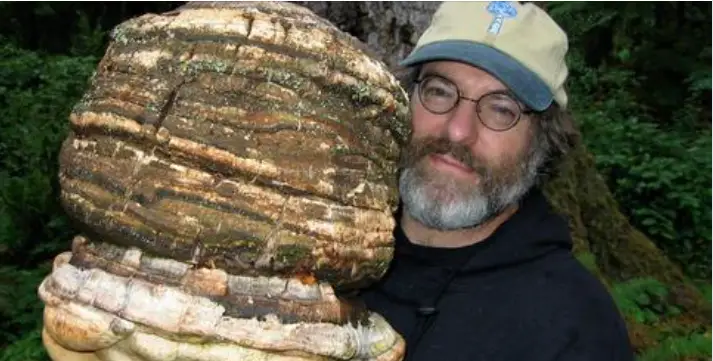
The Monsanto Company was founded way back in 1901 in St. Louis, Missouri, and has since gone on to merge with Bayer, the German pharmaceutical and pesticides giant whose products have been linked to psychiatric episodes, mass poisonings, deaths and more.
Monsanto’s system of farming caught on in the post-World War II era, as the company that was widely known for creating Agent Orange went on to develop the cancer-causing herbicide glyphosate, as well as the lab-created, genetically engineered foods that flooded store shelves beginning in the mid-1990s.
As this soil-destroying, yet highly profitable system of agriculture took root both in the United States and abroad, relatively small but dedicated groups of people and individuals alike have gone to work, researching novel ways to protect crops without these toxic and unnatural systems of production.
One of them is Paul Stamets, the renowned mushroom expert who made an incredible discovery while working to protect his home from invading carpenter ants.
Paul Stamets’ Incredible Discovery
Paul Stamets is a 67-year-old American mycologist who has studied mushrooms for over four decades. He is the author of several books including ‘Mycelium Running: How Mushrooms Can Help Save the World,’ which has over 2,300 five-star reviews on Amazon.com.
Paul’s discovery began when he sought a unique solution to the problem of carpenter ants attacking his house. As you may have guessed, he turned to mushrooms to help save the day.
This was a keystone moment for Stamets, as he began to research and guide the production of several new species of mushrooms while developing new techniques for mushroom cultivation.
On May 31st, 2011, the U.S. Patent Office Awarded two breakthrough patents, #7951388 and #7951389, to Stamets that could “revamp the way we control insects,” according to Paul’s Facebook page.
Stamets system of pest control utilizes a unique type of fungus in the same category as Cordyceps, the “zombie mushroom” that is incredible for lung health when taken as a supplement and offers a “Trojan Horse” solution that could replace many toxic insecticides currently in use.
Stamets found that if the mycelium is cultured to delay sporulation, insects would engage in the fungal mycelium spreading it.
“From termites to mosquitoes, a new suite of mycological solutions are possible,” Stamets said on his page.
His aforementioned book, ‘Mycelium Running,’ contains the guiding principles and ecological rationale for the uses of these methods, he added on the Facebook post announcing his discovery and U.S. patents.
Stamets has won the following awards during his time as a mycologist:
-National Geographic’s Adventure Magazine’s Green-Novator
-The “Bioneers Award” from The Collective Heritage Institute
-The “Found of a New Northwest Award” from the Pacific Rim Association of Resource Conservation and Development Councils
He was also named as one of Utne Reader’s “50 Visionaries Who Are Changing Your World.”
SMART Pesticides
Stamets’ signature creation is called SMART pesticides, which utilizes fungi as its base.
The award-winning mycologist used his knowledge of Cordyceps, which is entomopathogenic (it causes disease in insects). These types of fungi naturally produce spores that infect, kill and repel insects.
Stamets found that if the fungi are cultured to delay sporulation, the insects would engage with the mycelium, spreading it throughout their colonies, much like how ant traps work.
This ‘Trojan Horse’ solution can replace many of the toxic insecticides currently used. Insects who eat it are turned into fungi from the inside-out.
Unlike glyphosate, this SMART pesticide system is 100% natural.
It is non-GMO, and 100% safe for people and the environment. These pesticides are created using standard tissue culturing and natural selection, similar to cross-breeding crops in the field, without any genetic engineering techniques that may cause unintended mutations or deviations.
Stamets said that the strain he creates is selected to harm only the insects it targets. It is capable of being a permanent, safe solution for over 200,000 species of insects, in stark contrast with toxic pesticides that destroy the soil, wildlife, and harm the health of many who come in contact with them.
“We do not wage war against insects,” Stamets said. “We just want to protect our homes, crops, or bees without causing collateral harm to the ecosystem.”